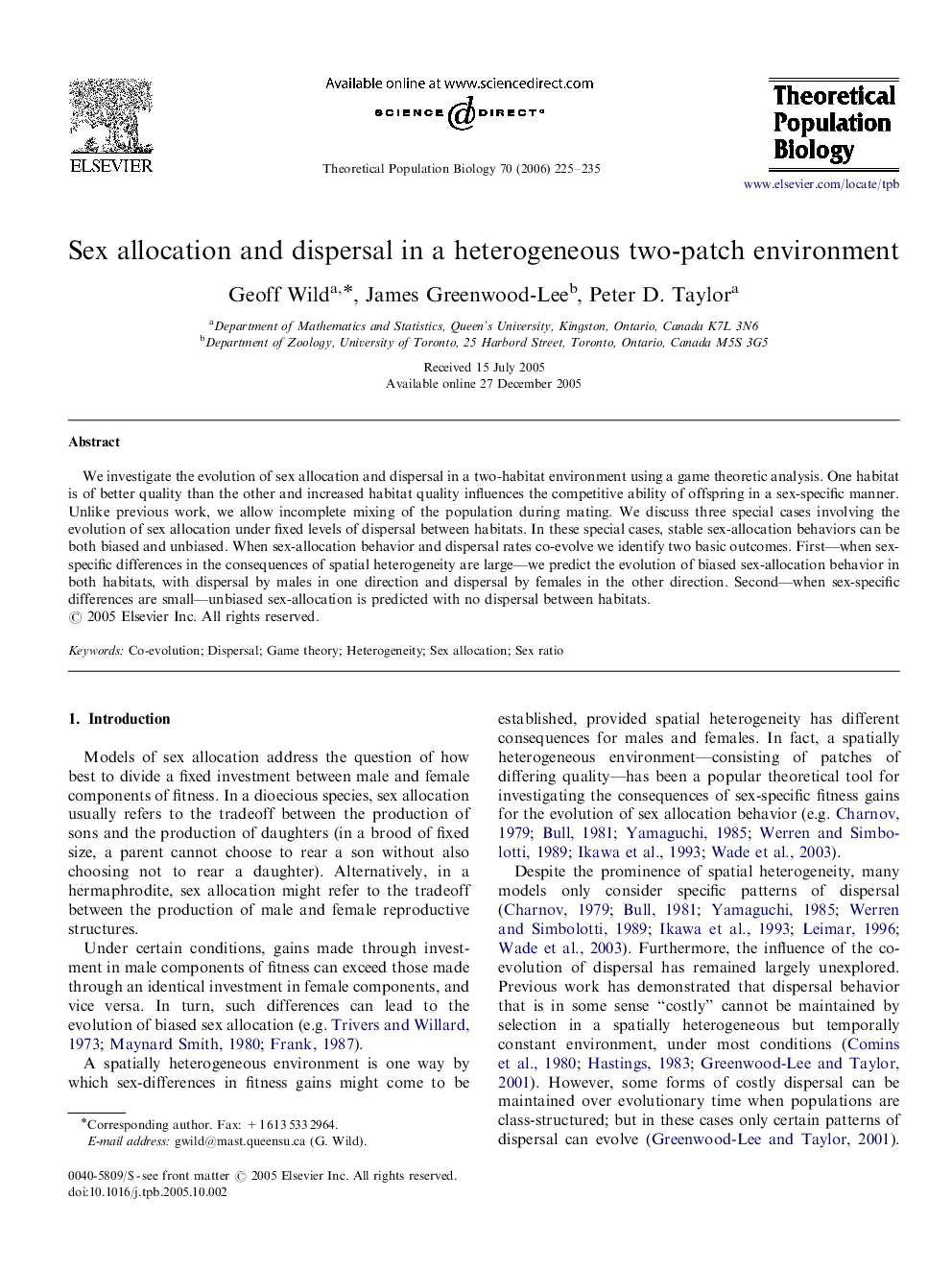| Article ID | Journal | Published Year | Pages | File Type |
|---|---|---|---|---|
| 4503017 | Theoretical Population Biology | 2006 | 11 Pages |
Abstract
We investigate the evolution of sex allocation and dispersal in a two-habitat environment using a game theoretic analysis. One habitat is of better quality than the other and increased habitat quality influences the competitive ability of offspring in a sex-specific manner. Unlike previous work, we allow incomplete mixing of the population during mating. We discuss three special cases involving the evolution of sex allocation under fixed levels of dispersal between habitats. In these special cases, stable sex-allocation behaviors can be both biased and unbiased. When sex-allocation behavior and dispersal rates co-evolve we identify two basic outcomes. First-when sex-specific differences in the consequences of spatial heterogeneity are large-we predict the evolution of biased sex-allocation behavior in both habitats, with dispersal by males in one direction and dispersal by females in the other direction. Second-when sex-specific differences are small-unbiased sex-allocation is predicted with no dispersal between habitats.
Related Topics
Life Sciences
Agricultural and Biological Sciences
Agricultural and Biological Sciences (General)
Authors
Geoff Wild, James Greenwood-Lee, Peter D. Taylor,
